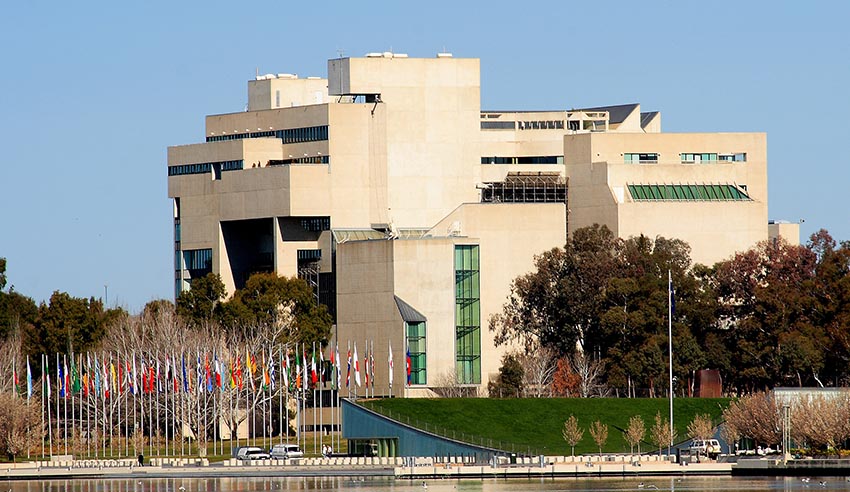High Court curbs Timber Creek compensation
The High Court of Australia has ruled on the Timber Creek case, handing down its first ever decision regarding a native title compensation appeal.

The appeal decision in the case of Northern Territory of Australia v Mr A Griffiths (deceased) and Lorraine Jones on behalf of the Ngaliwurru and Nungali Peoples & Anor, saw the compensation award at Timber Creek reduced from $2.9 million to just over $2.5 million after the High Court unanimously allowed two appeals in part and dismissed one appeal from a judgment of the Full Court of the Federal Court of Australia.
To continue reading the rest of this article, please log in.
Create free account to get unlimited news articles and more!
The decision marked the first time the High Court of Australia had undertaken a judicial assessment of a native title compensation case, while the Full Bench hearing for the appeal last year also marked the first ever sitting of the court in the Northern Territory.
At issue in the appeal was the amount of compensation payable to the Ngaliwurru and Nungali Peoples, with all parties to the case appealing to the High Court on almost all grounds.
In a High Court statement released 13 March, after the Full Bench’s reasoning was released, it was noted that “the Northern Territory was responsible for 53 acts held to have impaired or extinguished the claim group’s native title rights and interests, which gave rise to the claim group’s entitlement to compensation on just terms under [section] 51 of the Native Title Act”.
As a result, the court awarded “compensation for economic loss equating to 50 per cent of the freehold value of the affected land with simple interest, and compensation for cultural loss in the amount of $1.3 million” to the Ngaliwurru and Nungali Peoples (which made up the claim group) for the extinguishment of their non-exclusive native title rights and interests, the statement read.
Among other things, the statement explained that the Northern Territory and the Commonwealth had contended in their High Court appeals “that the value of the claim group’s economic loss did not exceed 50 per cent of the freehold value of the affected land, and the award for cultural loss was manifestly excessive”.
Of note, was the continued maintenance of the original award of $1.3 million for loss of spiritual attachment by the High Court’s Full Bench.
“The court held that the award to the claim group was not manifestly excessive and was not inconsistent with acceptable community standards”, the court’s statement noted.
The court had held that the assessment of cultural loss had “required determining the spiritual relationship which the claim group have with their country and then translating the spiritual hurt caused by the compensable acts into compensation”.
It also said that such assessment “will vary according to the compensable act, the identity of the native title holders, the native title holders’ connection with the land or waters by their laws and customs and the effect of the compensable acts on that connection”.
The High Court’s decision followed the August 2016 decision which saw the Federal Court award approximately $3.3 million in compensation to the Ngaliwurru and Nungali Peoples on their native title rights in the town of Timber Creek, Northern Territory, that related to an area of approximately 1.26 square kilometres.
The original award comprised of $512,000 for economic loss, $1.3 million for loss of spiritual attachment, and $1.488 million for simple interest on the economic loss.
In the appeal to the Full Federal Court, the amount of compensation was decreased to around $2.9 million, where the award for economic loss was reduced from 80 per cent to 65 per cent of the freehold value.
Commenting on the High Court’s landmark judgment, Ashurst partner Tony Denholder considered that “the small area of Timber Creek still triggered a compensation liability of over $2.5 million, [which] will have strong implications for the more than 2.8 million square kilometres of native title land holdings across the rest of Australia”.
He said the High Court decision “has provided direction about assessing compensation for a few categories of impacts, however more case law is required to understand how native title compensation will be assessed for many other impacts, including mining projects, pastoral leases, agricultural development and other land uses partially inconsistent with native title”.
“The High Court's decision will be likely to trigger compensation applications from many of the hundreds of native title holder groups around Australia, who finally have clarity – albeit limited – on how they might quantify the compensation owed to them for impacts on their native title,” Mr Denholder continued.
He said all stakeholders “will need to confront the procedural complexities and cost of managing claims to native title compensation on a parcel-by-parcel basis [as] there is an added complexity in circumstances where liability for state action rests with a third party”.






